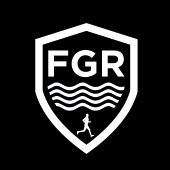‘A lifetime aggregate of aptitude and commitment’ – how to complete the Frog Graham Round
When Gary Tompsett became only the second person to complete Ramsay’s Round in winter he put his trust in a ‘lifetime aggregate of aptitude and commitment’. (His faith was well judged: his solo, unsupported time of 33 hours was not eclipsed for five years.) I was a much younger man when I first read Tompsett’s words. A little older and wiser now, I get it.
These words ring with truth, not least when used to explain what it takes to complete a Frog Graham Round. Running a long way over big mountains, swimming across a lake, repeating that pattern – that is the gist of the Frog Graham Round, a 40-mile, multi-summit, four-swim loop billed as the ‘ultimate swimrun challenge’. As for the rest: that’s the ‘lifetime aggregate’ stuff – the catalogue of things you learn when you choose to go to high places. Getting by on little or no sleep. Getting moving at 4am. Running in the dark. Knowing how to use a headtorch. Knowing when to put on your waterproof. Knowing when to check the map and knowing when not to. Making more good decisions than bad. Accepting, calmly, the bad ones. Packing a bag, unpacking a bag. Taking the right food, enough food. Eating it. Going to the burn before you are thirsty. Checking the bearing. Picking a line. Leaving a stash. Ensuring the stash is animal-proof. Knowing and meeting the rules. Dragging on a wet wetsuit. Knowing when to remove your shoes. Being a runner, then a swimmer, then a runner again. Allowing fear, but quietening and quelling it. Being hot and cold. Controlling shivering and jangling teeth. Being tired. Being patient. Knowing that this will pass: you will reach the other side, you will climb that mountain.
I will add one more thing to a list that could continue to mushroom: context. You are not alone. Others have been here before; they will come after. If they can, you can. That certainty got me across Derwentwater, a potentially daunting end-of-effort swim of around one mile.
As I approached the dark outlines of Lake District mountains from the north, destined for a pre-round, near-sleepless night in a Keswick car park, I listened to Natalie Hawkrigg describe her ‘pitch black’ winter crossing of Derwentwater, guided by lights left on the islands: ‘I was hyperventilating and shouting very loudly, “where is it?”.’ (You will find the rest on the Wild Ginger Running podcast.) And as I stood on the edge of Derwentwater, following some 15 hours of continuous forward movement, under a gradually darkening sky, I knew the next few minutes could never, ever be that awful.
It was not remotely awful. Business-like is the adjective that comes to mind. We stuck our heads in the water and swam as fast and direct as we possibly could, emerging, as required, on to the islands, before resuming another determined thrash. I looked back to Catbells only once. That is the best way to think about Derwentwater: to not really think about Derwentwater.
The last time I ran towards the Moot Hall in fading light was 12 years earlier. That day was a start and an end, a Bob Graham Round that culminated in a joyous sprint, as if my life defended on it. I felt marvellous that day, fit and fast and flying, right after feeling dreadful for the first 10 hours. I don’t know if I will ever find those extremes of suffering and joy again. I didn’t on the Frog Graham Round. I shuffled into Keswick, scarcely faster than a walk. Perhaps this is the double-edged sword of Tompsett’s ‘lifetime aggregate’ theory. It is a mechanism of control. There is only jeopardy if you permit jeopardy, and barring a physical issue, I knew I would be touching the door of the Moot Hall twice in one day.
Maybe I should have added self-belief to the list above.
I won’t write a summit-by-summit account of the round. That has been done by others.
And, in truth, I don’t really remember. Instead, it’s the snippets of memories that linger in the consciousness: the furious dawn gale on Skiddaw, the hole in the stash, the point at which the ground on Mellbreak levels, running through the copse at Horse Close to meet Buttermere, the smell of the barbecue on the far shore of Derwentwater, and – unusually for me – sharing every step, every stroke – with someone else, to be able to say ‘we did that together’.
But even a shared journey is a personal one. I had not done a ‘big’ round for three years. I kept getting injured. One day I turned a corner – not a metaphorical one – and a cyclist barrelled into me, fracturing two bones in a leg. I had a milestone birthday that I largely ignored. I thought, perhaps, I had had my time in the sun. Pessimism seemed justified. But no, the Frog Graham Round came along, reminding me what legs and arms and heads can do when you put a little trust in your ‘lifetime aggregate’, finding that person who you thought was gone.
Jonny Muir
‘A lifetime aggregate of aptitude and commitment’ – how to complete the Frog Graham Round

